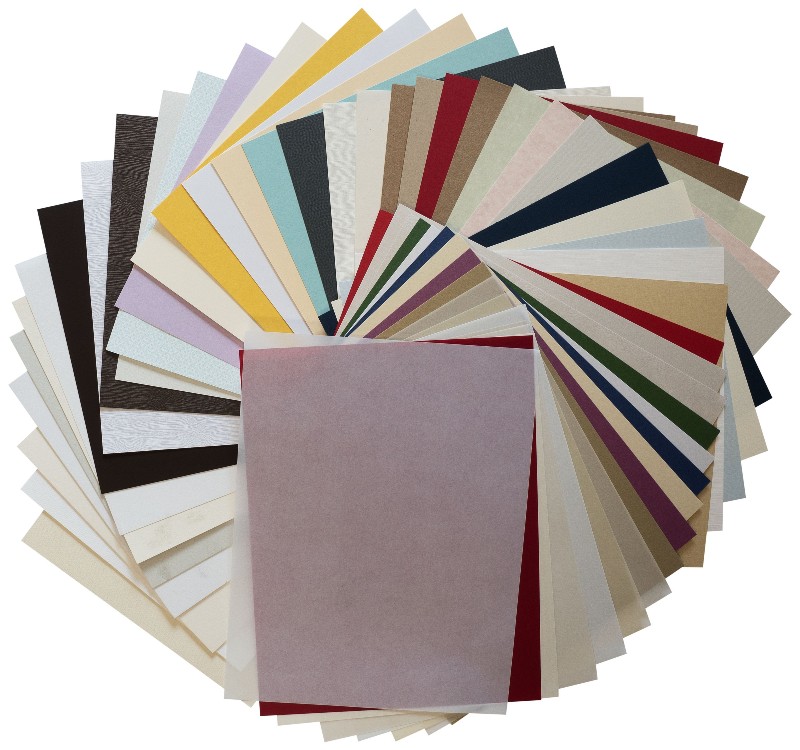The stock paper that you choose for your printing project can make or break you. Paper will impact costs, professional appearance, the saturation of colors, and so much more. Since you always want your project to be well received, there are quite a few things to consider as you choose your paper.


Consider the Life Span
While you may be focused on the design of your print project, you also have to think about the life span. How long do you expect the printed piece to be in the hands of the intended audience? A month? A week? Even less? Direct marketing pieces will typically have a shorter life span. People will get the information they need from your mailer, and then toss it. Other pieces, such as marketing brochures, catalogs, and annual reports may have longer life spans, as they will be kept for extended periods. As the life span increases, you’ll want to consider the weight and coating of the paper. Standard copy paper isn’t the best option as it will deteriorate too quickly. Spending more to ensure that the printed item is still in good condition a month, or a year, from now is often well worth it.Identify Personality
Your personality has to be noticeable within the printing project that you distribute. Consider what it is that your business is trying to say, are you fun, professional, or environmentally conscious? All of these things should be considered as you choose your paper stock. Consider papers that offer visible fibers made from recyclable content if you want to show off that you’re environmentally friendly. If you want to make a lasting first impression to show off how luxurious your brand is or how fun-loving you are, consider specialty papers that feature suede, leather, metallics, iridescent, or something else to appropriately represent the personality of your brand.Identify Purpose
There’s a big difference between printing an annual budget to share with a room full of employees versus printing a marketing brochure that you’re going to mail out to potential customers. The stock of paper you choose has to be considered based on purpose. Uncoated paper is ideal when you know that people are going to be taking notes. Make it easy for people to scribble notes in the margins. If you’re handing out paper during a meeting or seminar, uncoated is the way to go. Coated paper is better when you don’t want people writing on it, such as for marketing materials. It can offer extra protection against frequent handling. It won’t get scratched up as easily, so it can hold up against being put into the mail and being handed out at trade shows. Additionally, if you’re going to be looking to include graphics to promote your brand, glossy paper can help to make everything stand out. It’s one of the easiest ways to get people to take notice of what you have to offer.Choose Color and Brightness
You didn’t think white was your only color option, did you? There are lots of colors, and even many shades of white. You may want to consider the brightness of the stock, especially if you’re going to be using a lot of different colors. Bright whites help to add contrast. Blue-white stock tends to be some of the brightest. It can make it easier for your printed document to stand out. However, warmer wights are going to be more comfortable on the eyes, which is important if you have a long document that people will spend a few minutes reading. What you are printing will matter. If you are going to be printing photos of people, be sure you choose a warmer white. Otherwise, you may end up distorting the skin tones, and it will make your amazing project look less than desirable. If you’re not sure about the color and brightness of the paper, test a sample. Choose a bright white and a warmer white to see what’s going to look the best. And, if you’re only printing in black ink, you may want a colored paper stock, such as a red, yellow, green, etc. Pay attention to color psychology and your branding when you choose a color so that it stands out in the way that you desire.
Weight Matters
The weight of the paper matters, too. You can go from lightweight copy paper all the way to card stock. Paper is weighed based on the weight of 500 sheets of 17×22 paper. You can have paper weigh anywhere from 20 pound all the way to 80 pound and beyond. Letterhead will go on lighter stock than brochures. You have to consider your budget as well as the quantity of the pages you’re printing. Lighter stock is better when you’re printing a large quantity. When you have smaller counts, you may choose to go with a heavier stock as it will feel more and offer you more credibility. If you plan on having to ship your printed materials, such as mailing out annual reports, catalogs, or anything else, a lighter stock of just 10 pounds can end up saving you quite a bit in shipping costs.Samples Can Help You to Make a Decision
It can be overwhelming for you to choose a paper stock for your printing project. Even what you have used in the past may not be suitable because your objective has changed. This leaves you to navigate the options from scratch. Samples are available so that you can hold the paper in your hand. Don’t discount thinking about the way that a piece of paper feels in your hand. Some people may like coarse paper, such as linen, while many others may want something smoother, like a high gloss. There are too many decisions for you to make them without having firsthand knowledge:- Blue-white or warm white?
- Lightweight or heavyweight?
- What texture do you want?
- What kind of coating is desired?


